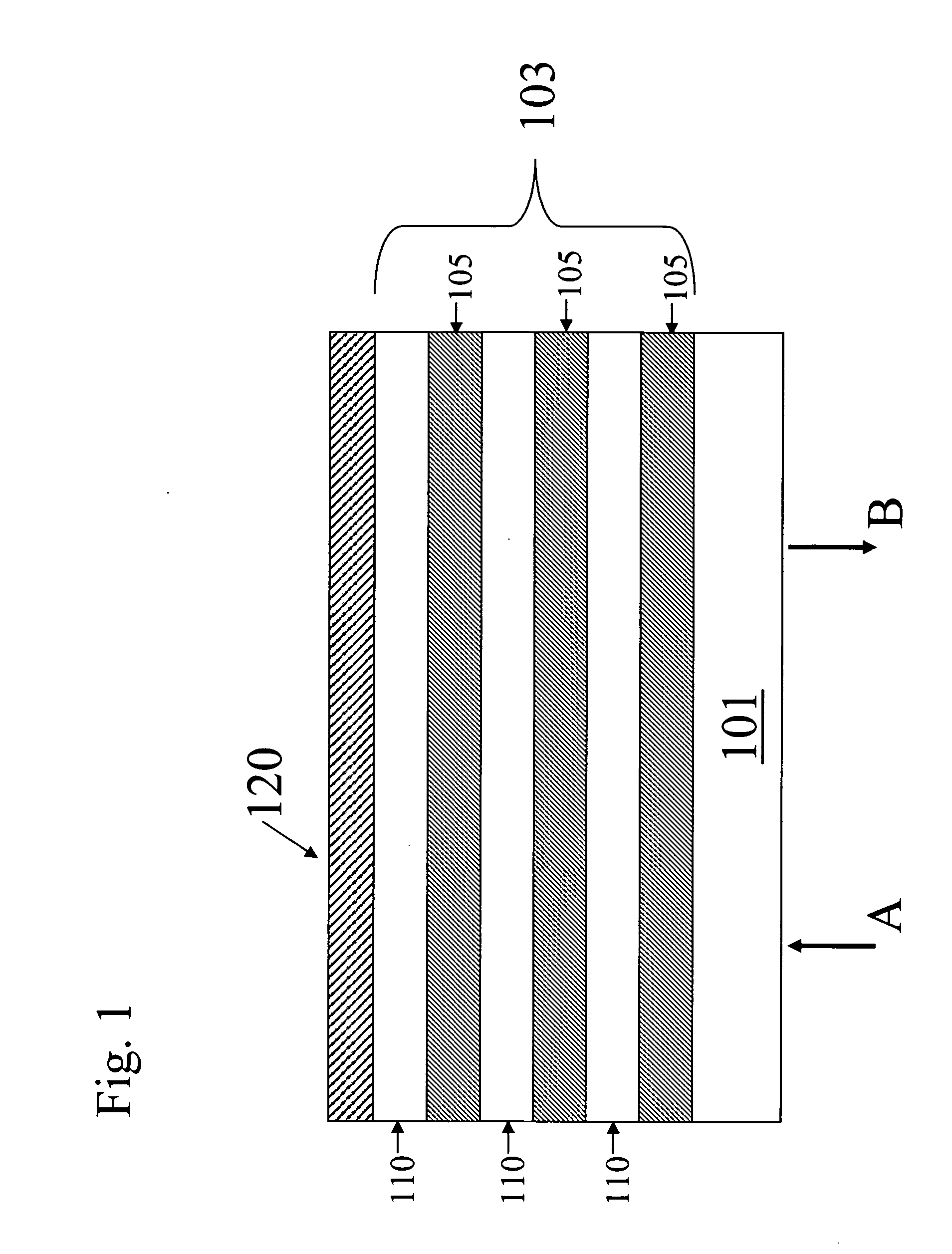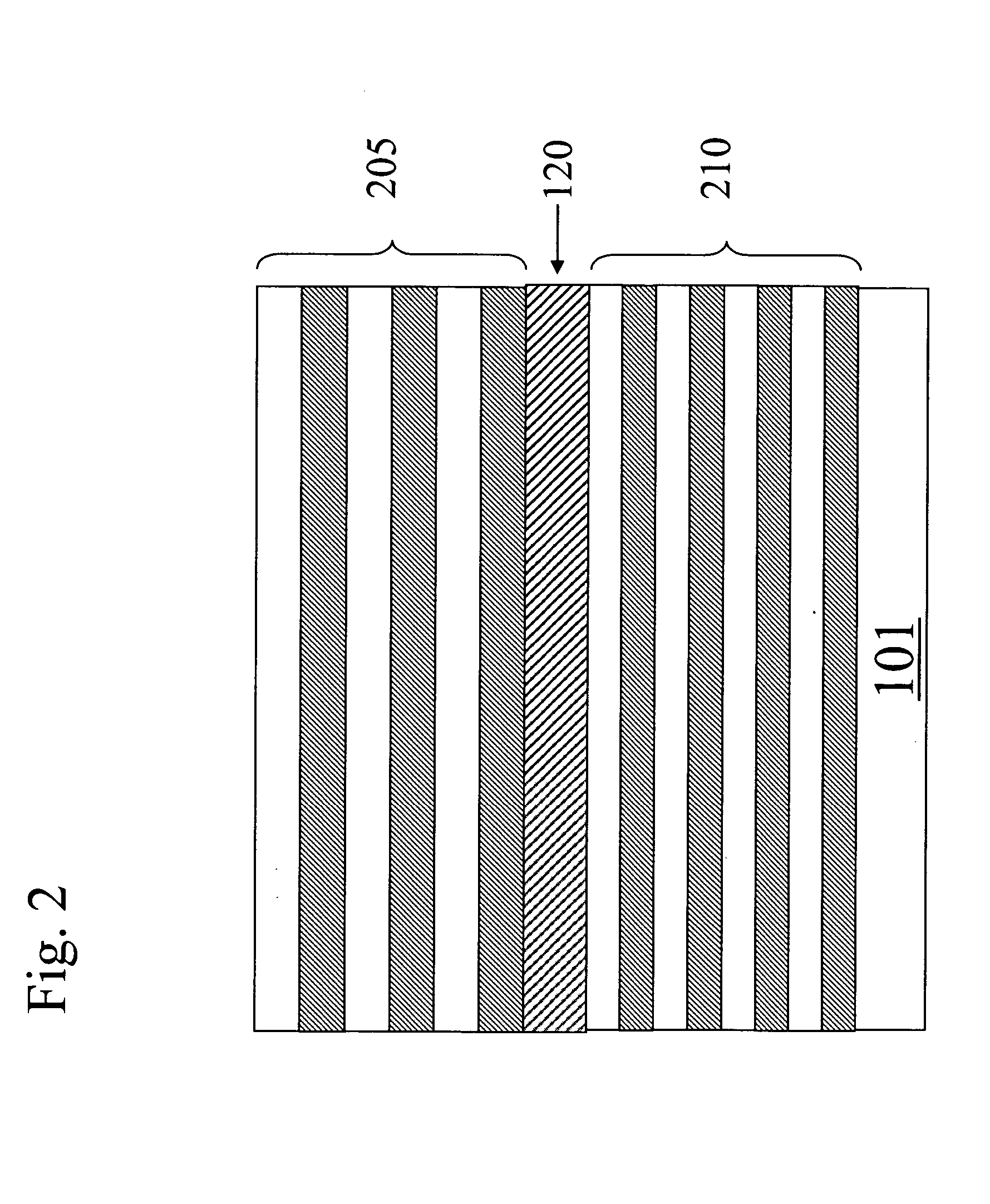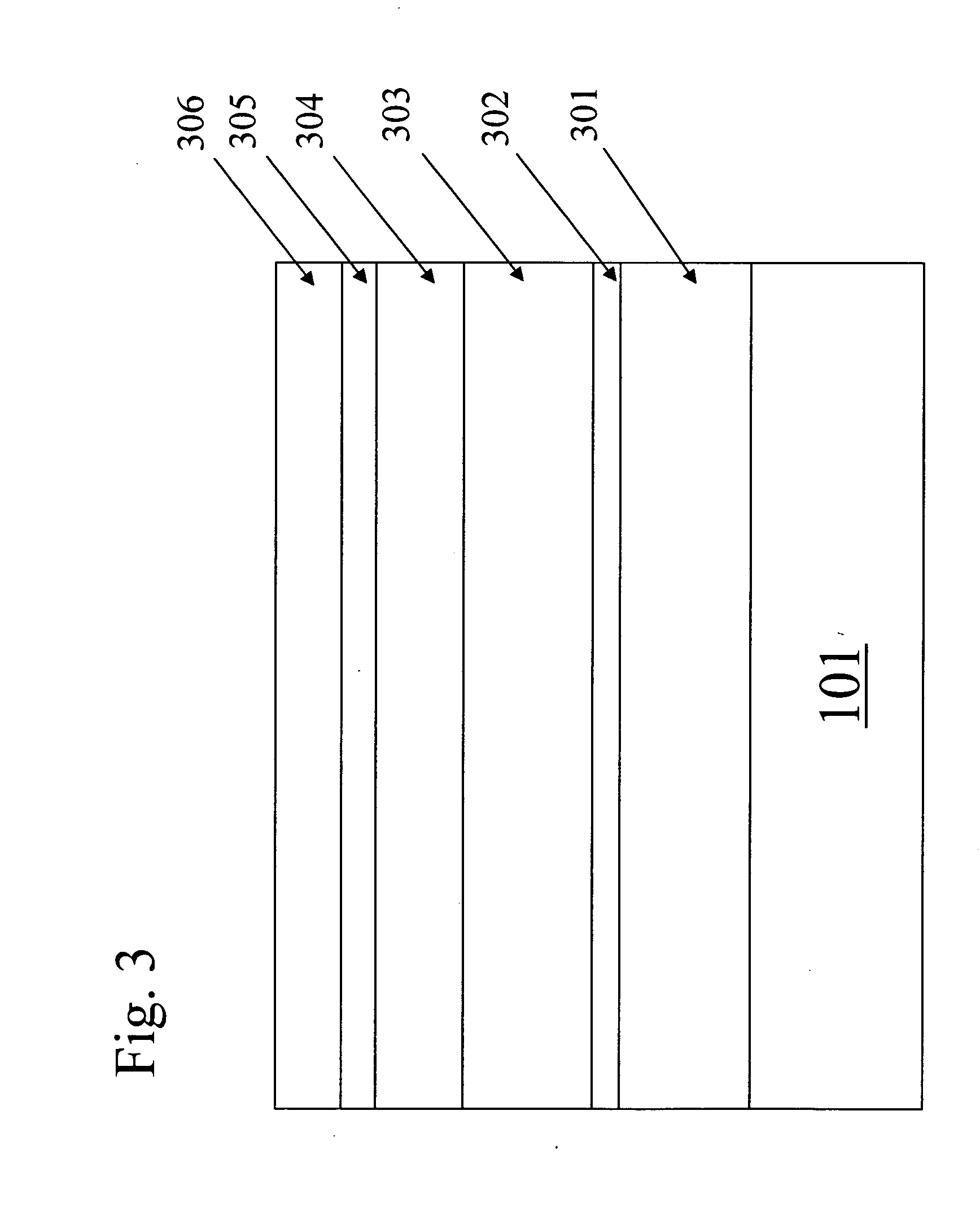Aperiodic dielectric multilayer stack
a dielectric and multi-layer technology, applied in the direction of layered products, semiconductor lasers, transportation and packaging, etc., can solve the problems of large surface area, difficult and expensive production, and difficult production of efficient crystalline-based devices, and achieve the effect of substantial differences in thickness
- Summary
- Abstract
- Description
- Claims
- Application Information
AI Technical Summary
Benefits of technology
Problems solved by technology
Method used
Image
Examples
Embodiment Construction
[0026] The photoresponse of organic PV cells with a well-defined layer structure can be accurately predicted by modeling the optical properties of the multilayer stack while simultaneously solving for exciton diffusion. Using aperiodic multilayer stacks, significant light coupling improvements may be realized, for example, a broad increase in coupling of light across the visible spectrum may be realized. Thin layer optoelectronic devices, designed for optimal diffusion efficiency, may suffer losses in, for example, absorption efficiency due to the thinness of the components. Aperiodic dielectric multilayer mirrors may be designed that have a reasonable reflectivity and a tailored phase behavior. Therefore, when these mirrors are used in combination with, for example, thin layer devices, gains in, for example, absorption efficiency and external quantum efficiency may be achieved. For example, a stack may be designed that would allow normally incident photons, or photons within a cert...
PUM
 Login to View More
Login to View More Abstract
Description
Claims
Application Information
 Login to View More
Login to View More - R&D
- Intellectual Property
- Life Sciences
- Materials
- Tech Scout
- Unparalleled Data Quality
- Higher Quality Content
- 60% Fewer Hallucinations
Browse by: Latest US Patents, China's latest patents, Technical Efficacy Thesaurus, Application Domain, Technology Topic, Popular Technical Reports.
© 2025 PatSnap. All rights reserved.Legal|Privacy policy|Modern Slavery Act Transparency Statement|Sitemap|About US| Contact US: help@patsnap.com



